Although it’s close to the Summer Solstice, the weather remains very changeable; regularly alternating from sunny to dull and wet. However this is enabling vegetation to thrive. It is lovely to hear birdsong still. One in particular the blackbird (Turdus merula) is a joy to hear, especially in the evening. Sadly Blackbird numbers have reduced in recent years, due to the Usutu virus (increasing because of warmer winters), and the BTO are asking for help with a citizen science survey. If you have a garden and could spend some time recording your local blackbirds then please consider taking part. The link, for more information can be found here.
Elder (Sambucus nigra) is flowering now in woodlands, amongst hedgerows and in gardens, taking over from the Hawthorn (Crataegus monogyna).
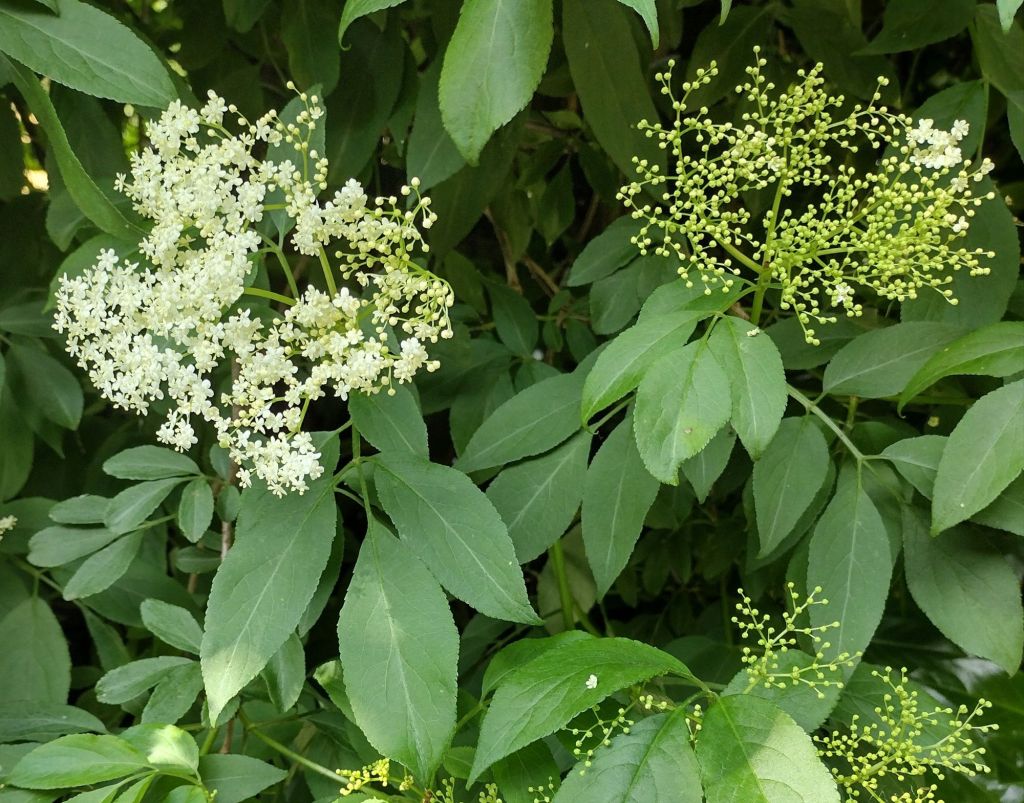
Elder can thrive for up to 60 years and reach 15 meters in height. It is thought that the common name developed from ‘aeld’ the Anglo-Saxon word for fire as the spongy centre of the branches can be hollowed out, enabling it to be used as a bellow to help ignite fires. As with the Rowan (Sorbus) tree, it was thought that the Elder could ward off evil spirits, along with the devil and witches. It was also believed that breaking or cutting any part of an elder would bring misfortune to the person responsible unless permission was granted from the elder mother (regarded as the witch or guardian within the tree) beforehand. However, the Elder tree is great for foragers. Both the flowers and vitamin c rich berries can be used for making cordials and preserves; although it is important to remember to cook the berries, making them safe, before consuming. Other uses for Elder have included whittling the stem into craft items such as beads, making whistles, using the foliage as a fly repellent in dairies as well as to create dyes. Historically all the dyes for Harris tweed came from the Elder, with each part of the plant resulting in different colours. The berries produced Blues and purples, the leaves created yellow and green while the bark was used to gain the greys and black dyes. Small mammals eat both the flowers and berries whilst birds such as Blackcaps (Sylvia atricapilla), Wood pigeon (Columba palumbus) and Thrushes (Turdus) enjoy the berries which ripen from late summer through to autumn. The flowers are also great for pollinators. Plus the caterpillars of the White-spotted pug (Eupithecia tripunctaria), Swallowtail (Papilionidae), Dot moth (Melanchra persicariae) and Buff ermine moths (Spilarctia luteum) will eat the leaves.
I have noticed a few Oak apples on several oak trees (Quercus) recently.

The growth of galls is a reaction to the Oak apple gall wasp (Biorhiza pallida) laying eggs in the leaf bud. They can reach up to 5cms in diameter and contain wasp larvae in chambers. While the larvae eat the tissue of the host tree, they do little long-term damage so the Oaks remain largely unscathed. The galls can be found in the tree canopy in May and June and the adult wasps will emerge in June and July. It is also possible to have a second generation within the same year with eggs being laid in the ground next to the roots. A picture of the wasp can be found at Naturespot. Once the galls are empty (they will have holes once the wasps have gone) they can be collected and made into oak gall ink. I look forward to giving this a go later in the year. Instructions on how to make this ink can be found here.
Some insects that I was able to see have been beetles. Unlike those which remain at ground level, some can be found on flowers as they wait for prey; this is where I saw these, a Malachite beetle (Malachius bipustulatus) and a Soldier beetle (Cantharis rustica).

Malachite beetle adults are about 6mm in length and can be found between April and August. Later in the year they can also be found on tree bark where they lay larvae for the following year.
The soldier beetle is larger (between 9-13mm in length) again they consume other insects.
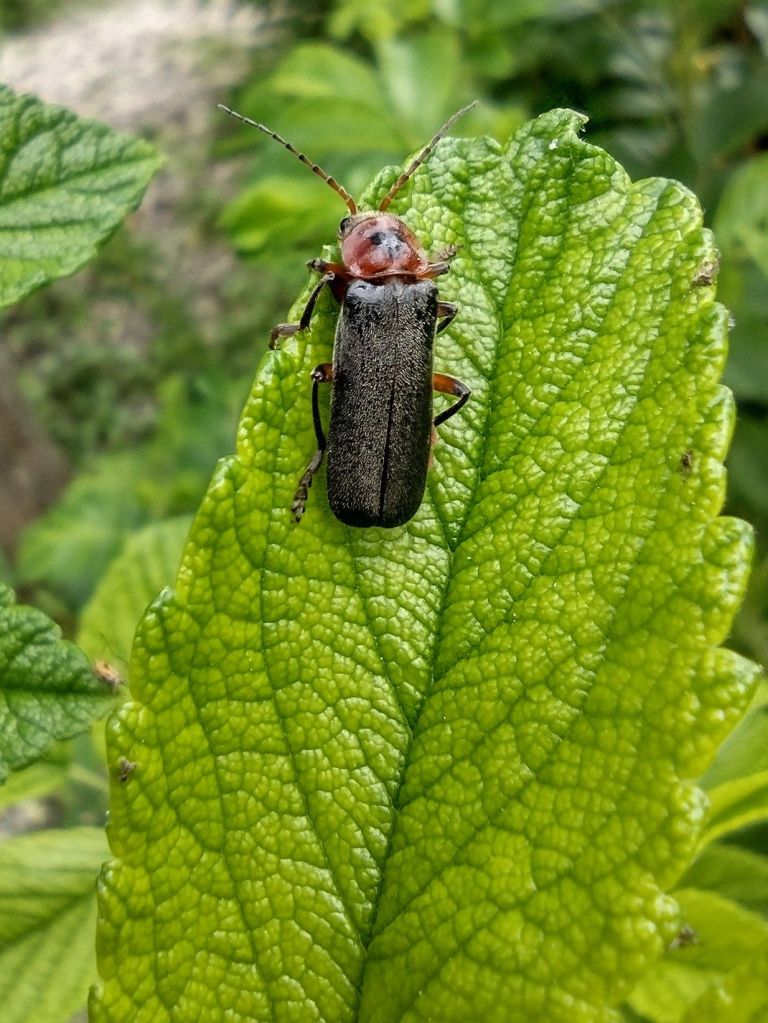
Black and red in colour, the Cantharis rustica is one of the UKs largest soldier beetles. Snails, worms and other invertebrates are eaten by its larvae, which can be found under rocks and leaf litter throughout winter.
There are lots of flowers blooming now and it is lovely to have the opportunity to learn more about wildflowers. Two new additions to my knowledge are, Salad burnet (Sanguisorba minor)
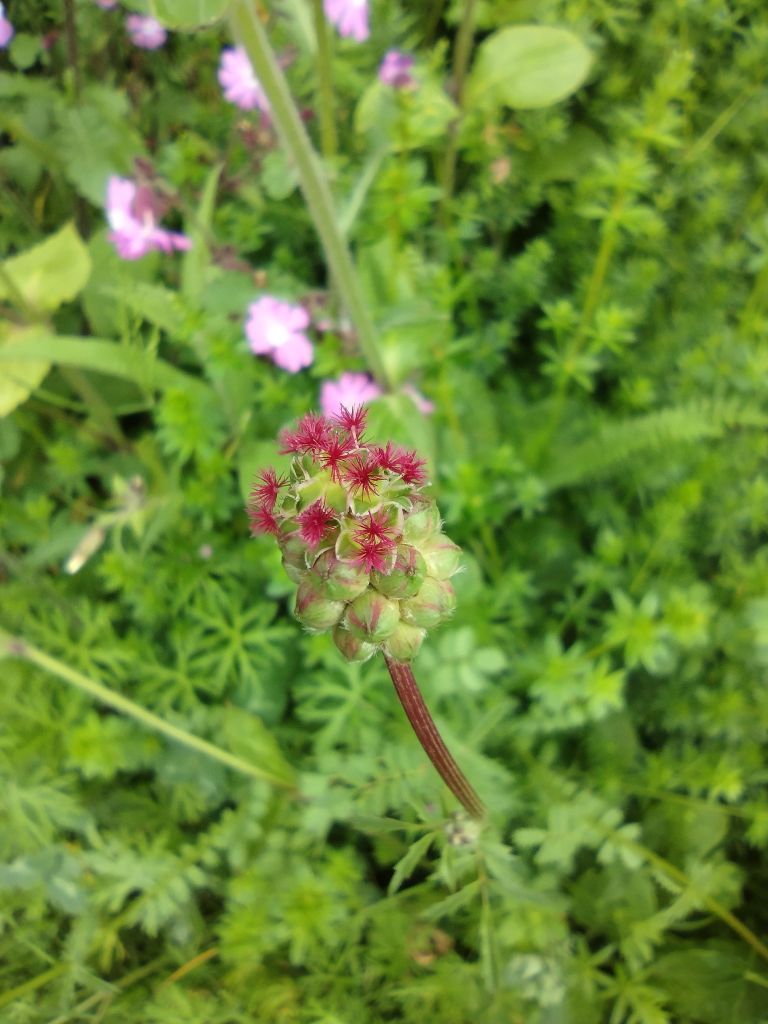
and Cotton thistle (Onopordum acanthium)- see below.
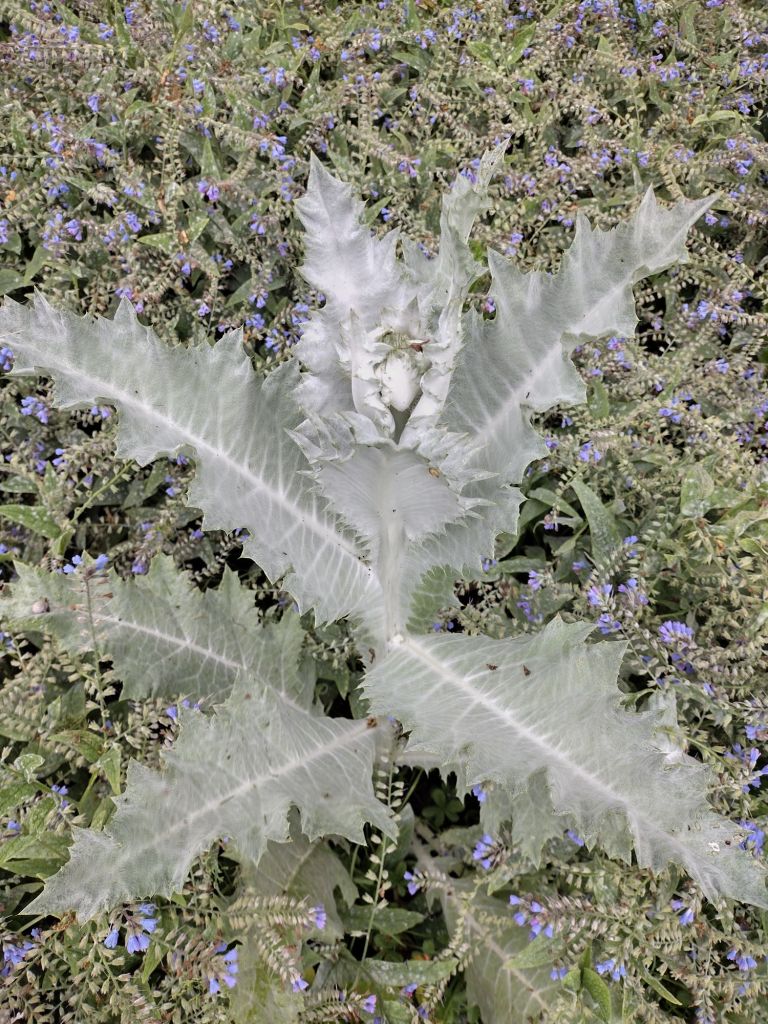
Salad burnet grows on chalky, limestone grassland. Part of the Rosacea family, as the common name suggests, its leaves (which have a cucumber scent when crushed) can be added to salads as well as summer drinks.
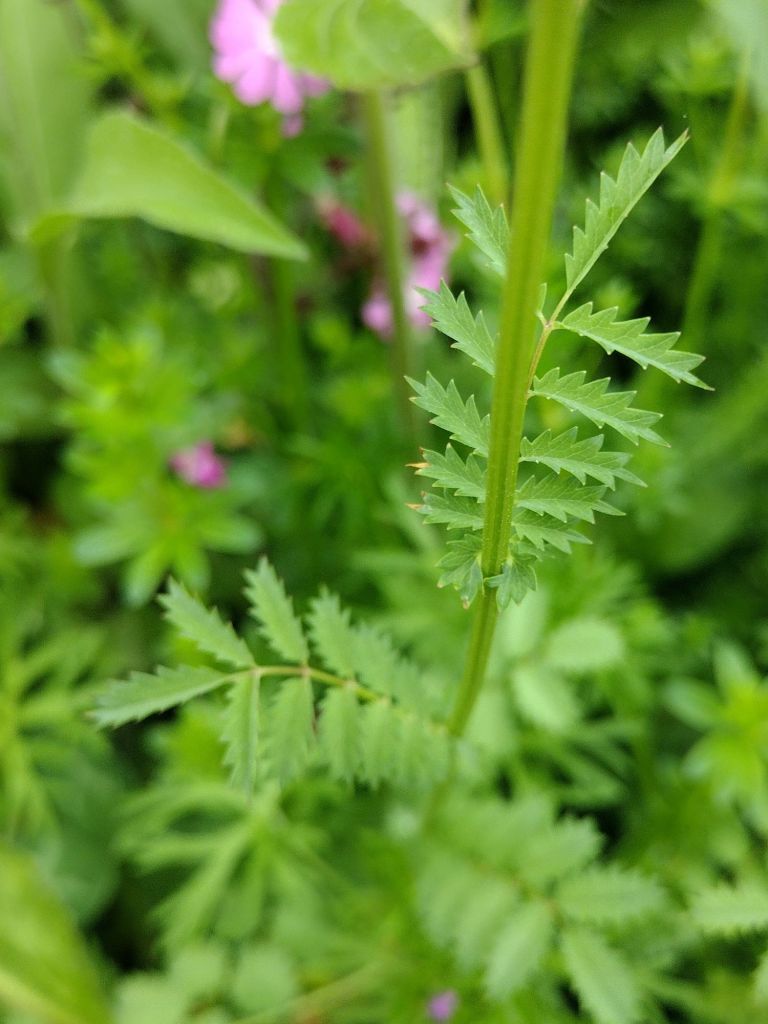
A poultice made from the flowerheads can be used to treat wounds as compounds within them can stem bleeding. It can grow up to 50 cms tall and spreads via rhizomes.
The common name of Cotton thistle derives from the hairs on the leaves which resemble cotton. This thistle has many names including the Giant thistle, Silver thistle, Scots thistle as well as Queen Mary’s thistle. Although this plant is often connected to Scotland, the emblem used in Scottish heraldry and the national emblem of Scotland is most likely to be the Spear thistle (Cirsium vulgare). The large silvery foliage of the Cotton thistle makes this wildflower quite striking. A biennial, the growth in the second year can reach up to 3 meters high and the leaves 10-50 cms in width. It particularly enjoys growing in fertile soil in areas that have been disturbed, along with roadsides and fields. Its pinky purple flowers bloom in summer. Some caterpillars like those of the Thistle ermine moth (Myelois circumvoluta) will eat the leaves. Pollinators and Goldfinch (Carduelis carduelis) also visit the flower heads, the latter eating the seeds.


















































